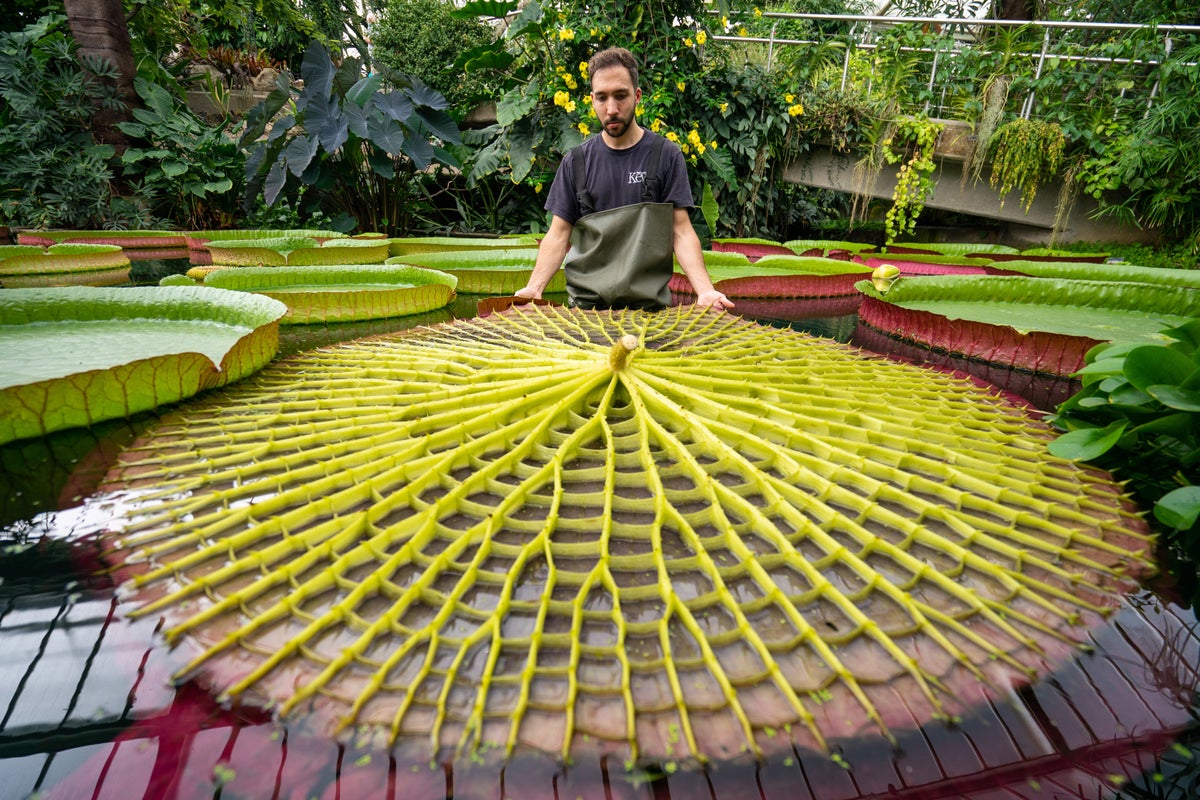
Scientists have found that a giant waterlily among the collection at Kew’s Botanic Gardens for 177 years is a new species, and “one of the botanical wonders of the world”.
The giant waterlily from the genus Victoria – named after Queen Victoria in 1852 – breaks the record as the largest in the world, according to a team led by Kew’s scientific and botanical research horticulturist Carlos Magdalena.
The new species, described in the journal Frontiers in Plant Science on Monday, has been named V boliviana in honour of Bolivian partners on the research, and the South American home of the waterlily where it grows in the aquatic ecosystems of Llanos de Moxos.
The genus Victoria has been poorly characterised for decades, researchers said, adding that it was due to an absence of specimens of the original plant as giant waterlilies are difficult to collect in the wild.
V amazonica was the first species in the genus to be named in 1832. However, scientists say data has been lacking to compare it against any new species found since.
In the new study, an international team of researchers combined all existing data from historical records, horticulture, and geography, and assembled a dataset of the species’ characteristics using citizen science, and specimens from herbaria and living collections across the world.
“Ever since I first saw a picture of this plant online in 2006, I was convinced it was a new species... It was clear to me that this plant did not quite fit the description of either of the known Victoria species and therefore it had to be a third,” Dr Magdalena said.
“For almost two decades, I have been scrutinising every single picture of wild Victoria waterlilies over the internet, a luxury that a botanist from the 18th, 19th and most of the 20th century didn’t have,” he added.
Kew scientists also analysed the DNA of V boliviana and found it was genetically very different from the other two species.
Based on the data, scientists confirmed that there are in fact three species in this iconic genus –V amazonica, V cruziana and V boliviana.
They found that the new giant water lily species is most closely related to V. cruziana, and that they diverged around a million years ago.
“In the face of a fast rate of biodiversity loss, describing new species is a task of fundamental importance; we hope that our multidisciplinary framework might inspire other researchers who are seeking approaches to rapidly and robustly identify new species,” Natalia Przelomska a co-author of the study said.
The new giant waterlily can be seen in the Waterlily House and the Princess of Wales Conservatory at Kew Gardens.







